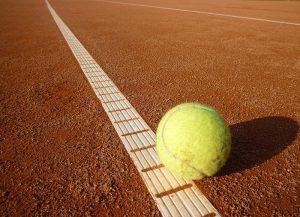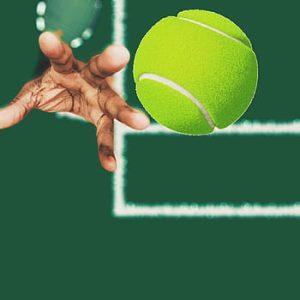We may earn money or products from the companies mentioned in this post.
Introduction

When it comes to the world of tennis, rankings play a crucial role in determining a player’s standing and opportunities within the sport One ranking system that holds particular significance is the protected ranking This unique concept allows players who have been sidelined due to injury or other extenuating circumstances to maintain their ranking position for a certain period of time
Definition of Protected Ranking in Tennis
In simple terms, a protected ranking is a special status granted to professional tennis players who have experienced an extended absence from competition due to injury or illness It allows them to retain their pre-injury ranking for a specified duration, enabling them easier access to tournaments upon their return
This system was introduced by the Association of Tennis Professionals (ATP) and Women’s Tennis Association (WTA) as a way to provide support and assistance to players who face setbacks that are beyond their control It serves as a mechanism for fair play and ensures that athletes are not unfairly penalized for circumstances outside of their influence
Purpose and Importance of Protected Ranking
The purpose of implementing the protected ranking system in tennis is two-fold Firstly, it offers injured or ill players some relief from the pressure associated with maintaining their ranking while being unable to compete actively on the court
Secondly, and perhaps more significantly, it safeguards these players’ tournament entry rights upon their return from injury or illness By allowing them to retain their previous ranking position, they can bypass the arduous process of rebuilding their rankings from scratch
This aspect proves especially beneficial when considering higher-level events such as Grand Slam tournaments or Masters Series events where entry requirements are often stringent based on rankings alone The protected ranking provides an opportunity for athletes to regain momentum swiftly without facing unnecessary barriers due to their temporary absence
Circumstances When a Player Can Request a Protected Ranking
A player can request a protected ranking under specific circumstances that hinder their ability to compete at the professional level These circumstances typically include long-term injuries, surgeries, or illnesses that significantly impact their performance and force them to miss an extended period of time on tour
The determination of granting a protected ranking lies with the respective tennis governing bodies, ATP and WTA, who assess each case individually Factors such as the duration of absence, medical documentation, and other relevant information are taken into account before making a decision
It is important to note that while a protected ranking provides certain advantages, it does not guarantee entry into every tournament Players must still meet specific eligibility requirements set by tournament organizers However, having a protected ranking increases their chances of receiving wildcards or direct entries into events where they would otherwise struggle to qualify based solely on their current rankings
Protected Ranking Eligibility Criteria and Application Process

Eligibility Requirements for Requesting a Protected Ranking
When it comes to requesting a protected ranking in professional tennis, there are certain eligibility requirements that need to be met These criteria ensure that players who have been affected by injury or other reasons are given fair opportunities to resume their careers The eligibility requirements include:
-
Minimum Number of Tournaments Played:
Before being eligible for a protected ranking, players must have participated in a minimum number of tournaments This requirement ensures that the player has established a professional career before the unfortunate circumstances leading to their absence -
Length of Time Away from the Professional Tour:
The length of time away from the professional tour is another important factor in determining eligibility for a protected ranking It takes into account how long the player has been unable to compete due to injury or other reasons -
Documentation Supporting Absence Reason:
In order to request a protected ranking, players must provide proper documentation supporting the reason for their absence This documentation helps verify the legitimacy of their claim and ensures transparency in the application process
How to Apply for a Protected Ranking
The application process for obtaining a protected ranking involves several steps that players need to follow diligently Here’s an overview of how to apply:
-
Submission of Relevant Forms and Documents:
Players must submit all necessary forms and documents required by the governing body overseeing their respective tours – ATP (Association of Tennis Professionals), WTA (Women’s Tennis Association), or ITF (International Tennis Federation). These forms typically include detailed information about the player’s injury or absence, as well as supporting medical reports or other relevant evidence -
Timeframe for Application Submission:
It is crucial to submit the application within a specified timeframe The exact deadline may vary depending on the governing body and specific circumstances Failing to meet the submission deadline could result in the player being ineligible for a protected ranking
By following these procedures and meeting the eligibility requirements, players can increase their chances of obtaining a protected ranking and resuming their professional tennis careers with fair opportunities
Calculation and Usage of Protected Rankings in Tournaments

Protected rankings play a crucial role in the world of tennis, allowing players to maintain their standings even after a period of absence due to injury or other reasons Understanding how these rankings are calculated and utilized is essential for both players and fans In this article, we will explore the intricacies of protected rankings and shed light on their significance in tournament participation
How the Protected Ranking is Calculated
The calculation of a player’s protected ranking involves considering their average position in the rankings during the period before they were sidelined This average ranking serves as a benchmark for determining their standing when they return to competitive play
Furthermore, it is important to note that the duration for which a protected ranking remains valid varies depending on certain factors The length of time can differ based on whether the player is returning from an injury or another reason that caused them to be inactive
Entering Tournaments Using a Protected Ranking
Once a player has obtained a protected ranking, they can utilize it to enter tournaments with certain limitations and regulations These rules are put in place to ensure fairness among all participants while still acknowledging the unique circumstances surrounding protected rankings
- Restrictions on the Number of Tournaments: Players with a protected ranking are typically limited in terms of how many tournaments they can enter using this status The specific limitations vary depending on various factors such as tournament category, gender, and individual circumstances
- Rules Regarding Major Events: When it comes to prestigious events like Grand Slams, ATP Tour events, WTA Premier events, etc, special guidelines may apply for players relying on their protected ranking These guidelines aim to strike a balance between accommodating returning athletes and maintaining the integrity of the tournament
Understanding the intricacies of protected rankings and their role in tournament participation is essential for players, officials, and fans alike These rankings provide a lifeline for athletes who have temporarily faced setbacks due to injury or other reasons, allowing them to resume their careers with a fair chance to compete at the highest level
Protected Ranking Examples and Controversies

Case studies of notable players who have used their protected rankings successfully
When it comes to successful comebacks in tennis, few stories are as inspiring as Andy Murray’s journey After undergoing hip surgery in 2019, the former world number one faced an uncertain future However, thanks to the protection offered by his ranking, Murray was able to return to the court without starting from scratch With his protected ranking, he gained entry into tournaments that would have otherwise been out of reach This allowed him to regain his form and make a remarkable comeback that has captivated fans worldwide
Another player who made effective use of the protected rankings system is Victoria Azarenka Following her maternity break, Azarenka faced challenges in returning to professional tennis However, with her protected ranking, she was granted entry into tournaments despite her time away from the game This enabled Azarenka to ease back into competition and eventually regain her position among the top-ranked players Her success serves as a testament to the value of protected rankings in supporting athletes during significant life events
Controversies surrounding certain aspects of tennis’ protected rankings system
One controversial aspect of tennis’ protected rankings system revolves around how different circumstances are treated A heated debate has emerged regarding whether maternity leave should be treated differently from injuries when it comes to protecting a player’s ranking Critics argue that childbirth and recovery pose unique challenges for female athletes, warranting special consideration within the system By recognizing these distinct circumstances, tennis can promote gender equality and support women in their professional pursuits
Another point of contention arises from allowing doubles specialists to use their singles’ protected rankings Doubles specialists typically focus on excelling in pairs rather than individual play Allowing them access to singles tournaments through their protected rankings has sparked debate among players and fans alike Some argue that it dilutes the competitiveness of singles events, while others believe it provides an opportunity for talented doubles players to showcase their skills individually This controversy highlights the ongoing discussion surrounding the purpose and scope of protected rankings in tennis
Useful Links

ATP and WTA Rankings – See The Latest 2023 World …
What is a Protected Ranking in Tennis? – YouTube
WTA’s new rule to protect returning players’ rankings …
Can Nadal get a protected ranking? – Talk Tennis
Glossary of tennis terms
How Tennis Rankings Work (Easy Guide)
How Do Tennis Players Qualify For Grand Slams?
ITF World Tennis Tour Acceptance Lists Explained:
These days, top-100 ranking no longer a Slam dunk
Leicester Undergraduate Mathematical Journal
Players who hold a current Protected Ranking
Rafael Nadal Set To Leave Top 100 For First Time In 20 …
How does the ´Protected Ranking´ status help healing …
Where will Rafael Nadal be ranked when he returns to the …
Tennis rankings: Everything you need to know
What Does Pr Mean In Tennis Draw?
Gael Monfils to miss 2023 Australian Open, opts to protect …
ATP 250 Hertogenbosch main draw entry list, Raonic to …
WTA offers ranking protection for mothers returning to tour






